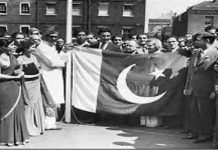Lahore: The Gross Domestic Growth (GDP) of 4.1 percent posted in the State Bank of Pakistan’s (SBP) annual report 2014-15 released on 11 December 2015 does not give a complete picture of the prevailing economic situation because of country’s increasing dependence on foreign borrowing, declining export, shrinking foreign direct investment and mounting non-oil import, say experts.
Pakistan’s exports have declined by 3.2 percent during Financial Year 2015 while the Foreign Direct Investment has gone down by 41.5 percent. These economic indicators with shortfalls have made Pakistan dependent on external borrowing.
According to the Finance Ministry’s documents, the country is currently sitting at Rs 18.14 trillion debt. In percentage the debt-to-GDP ratio comes to 65.1 percent.
Pakistan’s cash flow crisis has been managed less through taxation that favors the rich by keeping them out of the tax net and more by getting external financial support.
In September 2013 with just over $ 4 billion in foreign reserves, the government was on the brink of the balance of payment crisis. The reserves were barely enough to pay for less than a month’s imports.
Since then the reserves have recovered to $20 billion on the back of International Monetary Fund, a $1.5 billion gift from Saudi Arabia, an auction of telecommunications licenses, a 1.8 billion from Sukuk insurance and divestitures, the issuance of a Euro bond and $ 8098.25 million in remittance.
What one infers from the SBP report is that the growth of 4.1 percent is hardly a matter of celebration.
Experts believe that government’s inability to generate revenue by sustaining exports, expanding the tax net, creating a conducive environment for investment and pulling the import bills down has in real term eclipsed long-term development prospects.
Salman Shah, the former caretaker foreign minister of Pakistan and an economist, does not find this growth model sustainable. Talking to News Lens Pakistan, he says, Pakistan’s failure lies in its inability to utilize its growth capacity to fullest. Pakistan should, Shah says, get its industries running to full capacity, removes energy hurdles by controlling line losses and theft, installs functioning power-producing plants while creating a tax regime that benefits business and punishes tax evaders. Without these reforms, there would not be real growth in term of development, he remarked.
“During 2007, Pakistan’s image had produced tremendous results for country’s economy. Pakistan was ranked as one of the top 10 global reformers of 2006 in the World Bank’s development report 2007. The report lauds Pakistan for pursuing reforms such as privatization of public enterprises and deregulation of industries and financial sectors. Then with the arrival of PPP’s government not only all the good work was rolled back, but the country was also pushed into financial traps because of bad governance,” said Shah.
Shah blames the PML-N government for its window dressing approach at giving the economy a nicer look. In reality, he claims, this government has done nothing except starting power projects full of corruption, mismanagement, and financial discrepancies.
Confirming to what Shah narrated as the causes of Pakistan’s economic blues, the Chairman Punjab Board of Investment and Trade, Abdul Basit, says that energy crisis and wrong policies about trade and tariff have destroyed Pakistan’s export potentials.
He loathed government’s policy of not giving subsidies to the agriculture sector and refusing support to textiles by sticking to an unfriendly duty and tax regime. On the top of it, he says, the government is shy of exploring new markets such as the Halal Food market.
“Pakistan is a brand itself as far as Halal Food is concerned and we could earn billions in revenue,” says Basit. India is the strongest player of Halal food products with 90 percent share while Pakistan is contributing only 0.5 percent according to the official estimate.
“The government had a golden opportunity of passing on the benefits of reduced international oil prices to the industries, but it did not. Over the past one year, the international market has witnessed 200 percent decrease in oil price; having come down from $115 to $36. In Pakistan, we saw a reduction of only 40 to 45 percent reduction,” said Basit.
This scenario according to both Shah and Basit has left Pakistani products noncompetitive in the international market due to the high cost of production.
In attracting foreign direct investment, the field is further muddied due to unskilled labour, lack of advanced technological inputs, complicated business processes, and security issues related to terrorism, experts believe.
All Pakistan’s Textile Association’s Senior Vice Chairman, Shahid Mazhar, told News Lens Pakistan that foreign investors did not only leave Pakistan, but they also had cancelled projects that were in the pipeline.
Comparing regional players, he said that in 2006 Bangladesh was far behind from Pakistan in exports, today Bangladesh stands at 2.2 percent while Pakistan is exporting 1.5 percent of textiles. India was at 3 percent in 2006 and today it is contributing 4.5 percent.
Talking about government’s recent tax measures to raise Rs 40 billion to shore up its current account deficit, he said, had the government reduced its expenses and contributed Rs 20 billion from its kitty, the remaining 20 billion would have been easily raised through direct taxation.
“Because the government is not ready to compromise on its expenditure and on netting big fishes into tax regime a large number of people running small to medium size business are not motivated to give taxes,” added Mazhar.
The government has imposed 5 to 10 percent regulatory duty on the import of 61 items. Similarly, 5 percent duty has been increased on 289 items. One percent duty has been added to thousands of other items that includes cotton.
Globally, according to the SB report, exports have declined due to recessionary pressures bringing the commodity prices down. In the case of Pakistan, the country has suffered a quantum reduction in exports because of the high cost of production.
Pakistan has been unable to tap the booming US market. In fact, the report shows that Pakistan’s export to the US declined at a time when the US recorded all-time high import.
Dr Shahid Hassan Siddiqui, Chairman Research Institute of Islamic Banking and Finance, and a former banker told News Lens Pakistan that when Foreign Reserves were not raised on the strength of exports, they tend to paint a false picture of the economic activities in a country.
“The IMF programme will end next year in September and we will have to start paying back the debt. In the present situation when the economy is not generating indigenous wealth, questions rise on the government’s repayment capacity. In real term, our foreign exchange reserves have declined and so has the growth prospects,” remarked Siddiqui.



